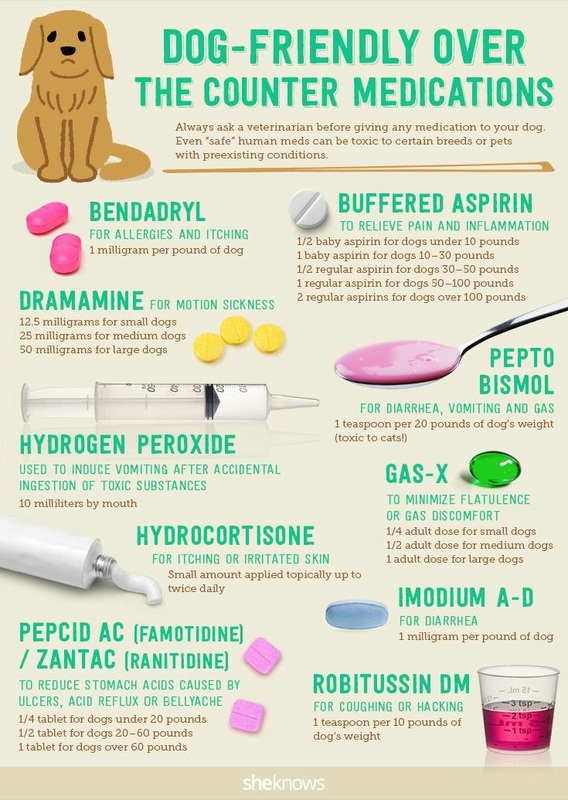Gas X for Dogs is not typically recommended. Always consult your veterinarian before giving any medication to your pet.
Table of Contents
Dogs can suffer from gas and bloating, which can cause discomfort and health issues. While human medications like Gas X (simethicone) are available, they may not be suitable for canine use. Consulting a veterinarian ensures your dog receives safe and effective treatment tailored to their specific needs.
The vet can recommend appropriate remedies, dietary changes, or treatments to alleviate gas and improve your dog’s digestive health. Using professional advice helps prevent potential risks and ensures your furry friend stays healthy and comfortable. Always prioritize your pet’s well-being by seeking expert guidance before administering any medications.
Causes Of Bloat In Dogs
Bloat in dogs, also known as Gastric Dilatation-Volvulus (GDV), is a serious condition. It occurs when a dog’s stomach fills with gas, food, or fluid. This can cause the stomach to expand and twist. Understanding the causes of bloat is essential for prevention and treatment.
Common Triggers
- Eating too quickly
- Drinking large amounts of water rapidly
- Exercising immediately after meals
- Eating only one large meal a day
- Stress and anxiety
Dogs that eat too fast can swallow air along with their food. This can lead to gas buildup in the stomach. Drinking water rapidly after meals can also contribute to bloat. Exercise right after eating can cause the stomach to twist. Feeding dogs one large meal a day can put them at risk. Stress and anxiety can also be triggers.
Breeds At Risk
Some dog breeds are more prone to bloat. Large and deep-chested breeds are particularly at risk. Here are some breeds that often suffer from bloat:
| Breed | Risk Level |
|---|---|
| Great Dane | High |
| German Shepherd | Moderate |
| Saint Bernard | High |
| Standard Poodle | Moderate |
| Boxer | Moderate |
Great Danes and Saint Bernards have a high risk of bloat. German Shepherds, Standard Poodles, and Boxers have a moderate risk. Owners of these breeds should be extra vigilant.
Understanding the causes and risk factors can help prevent bloat. Always monitor your dog’s eating habits and stress levels. Knowing the common triggers and at-risk breeds is the first step in keeping your dog safe.
Symptoms To Watch For
Understanding the symptoms of gas in dogs is crucial. It helps in early detection and proper treatment. Gas X for Dogs can be an effective remedy, but knowing the signs is the first step.
Physical Signs
Physical signs are often the first indicators. Look for these symptoms:
- Bloated Stomach: A swollen belly is a clear sign.
- Frequent Flatulence: Excessive gas release is common.
- Vomiting: Dogs may vomit due to discomfort.
- Diarrhea: Loose stools can accompany gas.
These physical signs show your dog may need medical attention.
Behavioral Changes
Behavioral changes often indicate discomfort. Watch for these behaviors:
- Restlessness: Your dog may be unable to settle.
- Whining: Dogs often whine in pain.
- Pacing: Constant movement can signal discomfort.
- Loss of Appetite: Dogs may refuse to eat.
These behavioral changes are important to note. They can help in diagnosing gas issues.
Immediate Actions
If your dog is suffering from gas, taking immediate actions is crucial. Knowing the right steps can help ease your pet’s discomfort. Here, we outline essential first aid tips and when to call the vet.
First Aid Tips
First, monitor your dog closely. Observe any changes in behavior or discomfort. Here are some quick first aid tips:
- Elevate the dog’s front paws to help relieve gas.
- Massage the dog’s belly gently to help move the gas.
- Offer your dog a small amount of water.
- Avoid feeding your dog more food immediately.
These steps can provide temporary relief. Do not give human gas relief medications to your dog without vet consultation.
When To Call The Vet
Some symptoms require immediate vet attention:
| Symptoms | Action |
|---|---|
| Excessive bloating | Call the vet immediately. |
| Vomiting | Seek veterinary help. |
| Severe discomfort | Contact your vet. |
| Weakness or lethargy | Get professional advice. |
These signs could indicate a more serious problem. Timely action can save your dog’s life.


Introducing Gas X
Introducing Gas X for Dogs: Keeping your furry friend comfortable is essential. Dogs can suffer from gas, just like humans. Gas X helps relieve gas pain and discomfort in dogs. This section explores the benefits and workings of Gas X for dogs.
What Is Gas X?
Gas X is a medication designed to relieve gas in dogs. It contains the active ingredient simethicone. Simethicone helps break up gas bubbles in the stomach. This makes it easier for gas to pass through the digestive system. It’s safe and effective for dogs.
How It Works
Gas X works by targeting gas bubbles in the stomach. Simethicone, the active ingredient, breaks down these bubbles. The gas then moves more easily through the digestive system. Your dog feels relief from bloating and discomfort.
Gas X is easy to administer. You can give it with food or directly by mouth. Follow the dosage instructions on the package or your vet’s advice.
Benefits of Gas X for Dogs:
- Relieves bloating and discomfort
- Safe and effective
- Easy to administer
Keep your dog happy and comfortable with Gas X. It’s a simple solution for a common problem.
Dosage Guidelines
Gas X can help dogs with gas issues. Correct dosage is vital for safety. Follow the guidelines below for best results.
Recommended Amounts
Consult your vet for the exact dosage. Typical recommendations are as follows:
| Dog Weight | Gas X Dosage |
|---|---|
| Under 20 lbs | 20 mg |
| 20-40 lbs | 40 mg |
| Over 40 lbs | 60 mg |
Frequency Of Use
Follow your vet’s instructions for frequency. A general guide is:
- Small dogs: once per day
- Medium dogs: twice per day
- Large dogs: three times per day
Do not exceed the recommended dosage. Overuse can cause harm.


Safety Considerations
Understanding the safety of Gas X for dogs is important. This ensures your pet stays healthy. Below are key points to consider.
Potential Side Effects
Gas X can cause side effects in some dogs. These side effects include:
- Diarrhea
- Vomiting
- Lethargy
Monitor your dog closely. If you see any of these symptoms, stop giving Gas X. Contact your vet immediately.
Contraindications
Not all dogs should take Gas X. Dogs with certain conditions should avoid it. These conditions include:
- Allergies to the ingredients
- Kidney or liver disease
- Digestive blockages
Always discuss with your vet first. They will advise if Gas X is safe for your dog.
| Condition | Recommendation |
|---|---|
| Allergies | Avoid use |
| Kidney Disease | Avoid use |
| Liver Disease | Avoid use |
| Digestive Blockage | Avoid use |
Always keep your dog’s health in mind. Your vet is the best source for advice.
Long-term Prevention
Long-term prevention of gas in dogs requires consistent attention and care. By making a few changes to their diet and lifestyle, you can ensure their digestive health remains optimal. Here are some effective strategies for preventing gas issues in dogs over the long term:
Dietary Adjustments
Making the right dietary adjustments is crucial for reducing gas in dogs. Here are some tips to consider:
- High-Quality Dog Food: Choose food with natural ingredients.
- Limited Ingredients: Opt for foods with fewer fillers and additives.
- Smaller Meals: Feed your dog smaller, more frequent meals.
Some ingredients can cause more gas than others. Avoid foods high in fiber and soy. Introduce new foods slowly to monitor their impact on your dog’s digestive system.
Lifestyle Changes
Incorporating some lifestyle changes can also help in managing your dog’s gas. Consider the following:
- Regular Exercise: Daily walks can aid digestion.
- Avoid Table Scraps: Human food can upset your dog’s stomach.
- Chew Toys: These can reduce air intake while eating.
Exercise not only helps with digestion but also keeps your dog active and healthy. Chew toys can be a fun way to ensure they eat more slowly, reducing the chance of swallowing air.
| Strategy | Action |
|---|---|
| Dietary Adjustments | High-quality food, limited ingredients, smaller meals |
| Regular Exercise | Daily walks, playtime |
| Chew Toys | Reduce air intake |
By making these dietary and lifestyle changes, you can significantly reduce the chances of gas issues in your dog. Consistency is key, so stick to these practices for the best results.


Frequently Asked Questions
Can You Give Gas-x To A Dog?
Consult your vet before giving Gas-X to your dog. It can help with gas, but dosage matters.
What Can You Give A Dog For Gas And Bloating?
You can give your dog simethicone for gas relief. Feed smaller meals and avoid gassy foods. Probiotics can help digestion. Always consult your vet first.
Can I Give My Dog Beano For Gas?
Consult your vet before giving Beano to your dog. It’s not typically recommended for pets. Use dog-safe alternatives.
What Medication Is Used For Bloat In Dogs?
Veterinarians use medications like antacids, pain relievers, and antibiotics to treat bloat in dogs. Prompt treatment is crucial.
Is Gas X Safe For Dogs?
Yes, but consult your vet first. Dosage varies.
Conclusion
Gas X can be a helpful remedy for dogs with gas issues. Always consult your vet before giving any medication. By understanding your dog’s needs, you ensure their comfort and health. Proper care and attention can make a significant difference.
Keep your furry friend happy and gas-free with the right approach.


